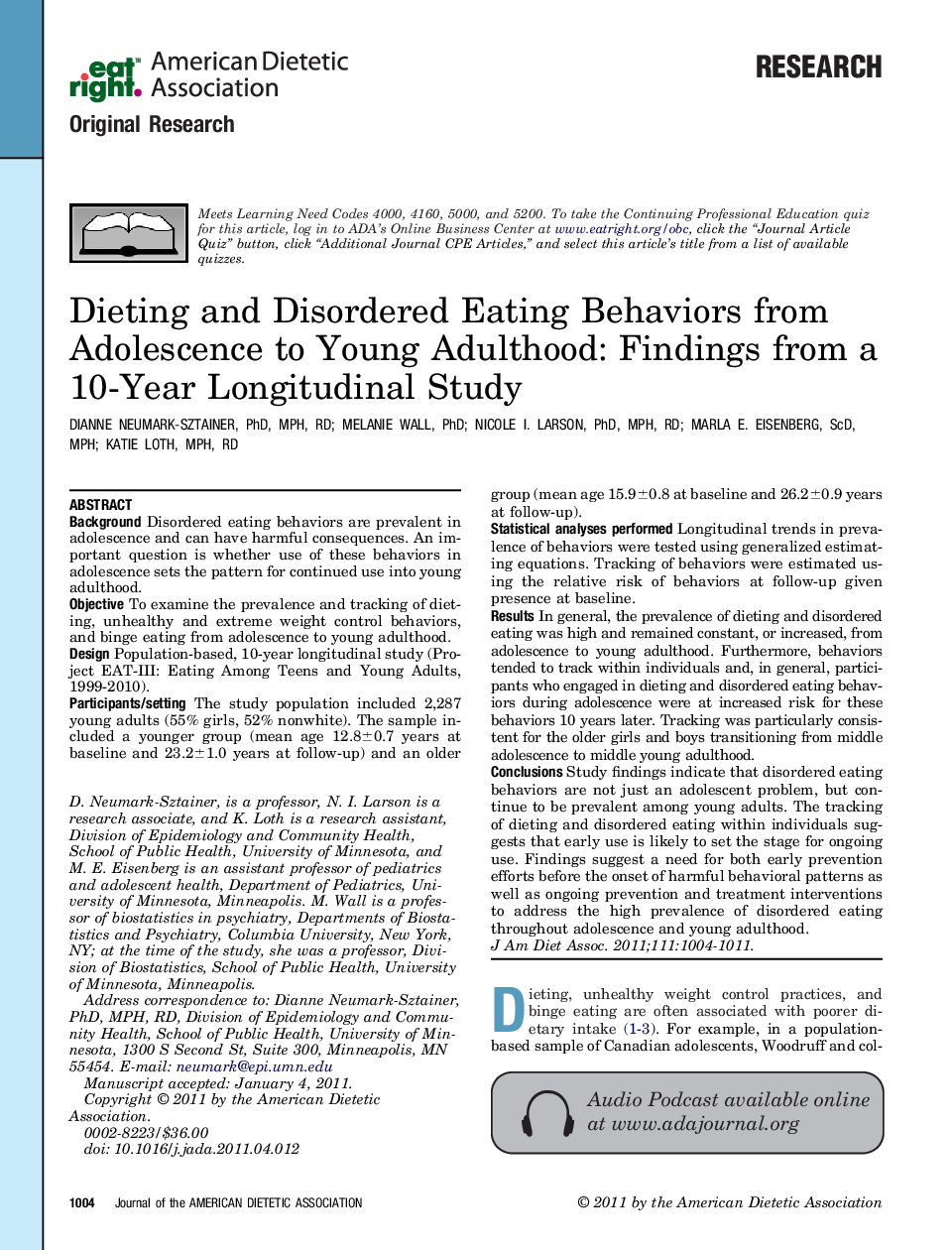| Article ID | Journal | Published Year | Pages | File Type |
|---|---|---|---|---|
| 2654087 | Journal of the American Dietetic Association | 2011 | 8 Pages |
BackgroundDisordered eating behaviors are prevalent in adolescence and can have harmful consequences. An important question is whether use of these behaviors in adolescence sets the pattern for continued use into young adulthood.ObjectiveTo examine the prevalence and tracking of dieting, unhealthy and extreme weight control behaviors, and binge eating from adolescence to young adulthood.DesignPopulation-based, 10-year longitudinal study (Project EAT-III: Eating Among Teens and Young Adults, 1999-2010).Participants/settingThe study population included 2,287 young adults (55% girls, 52% nonwhite). The sample included a younger group (mean age 12.8±0.7 years at baseline and 23.2±1.0 years at follow-up) and an older group (mean age 15.9±0.8 at baseline and 26.2±0.9 years at follow-up).Statistical analyses performedLongitudinal trends in prevalence of behaviors were tested using generalized estimating equations. Tracking of behaviors were estimated using the relative risk of behaviors at follow-up given presence at baseline.ResultsIn general, the prevalence of dieting and disordered eating was high and remained constant, or increased, from adolescence to young adulthood. Furthermore, behaviors tended to track within individuals and, in general, participants who engaged in dieting and disordered eating behaviors during adolescence were at increased risk for these behaviors 10 years later. Tracking was particularly consistent for the older girls and boys transitioning from middle adolescence to middle young adulthood.ConclusionsStudy findings indicate that disordered eating behaviors are not just an adolescent problem, but continue to be prevalent among young adults. The tracking of dieting and disordered eating within individuals suggests that early use is likely to set the stage for ongoing use. Findings suggest a need for both early prevention efforts before the onset of harmful behavioral patterns as well as ongoing prevention and treatment interventions to address the high prevalence of disordered eating throughout adolescence and young adulthood.
